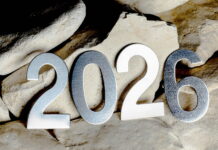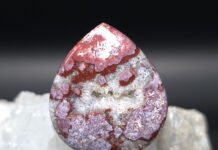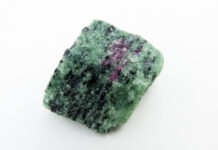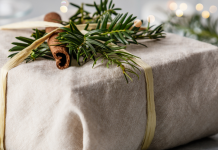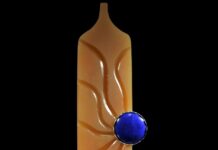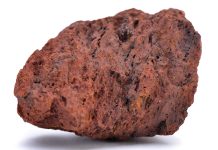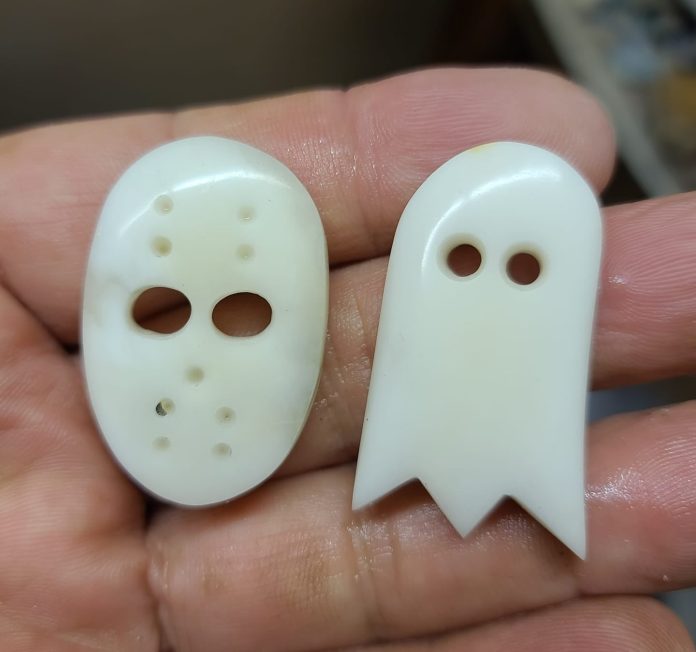
Howlite was first discovered in Nova Scotia in 1868 by Henry How. He originally named the stone silicoboro-calcite, which was eventually renamed howlite in his honor. Since then, the main source of this mineral has been found in great abundance in the Tick Canyon in Los Angeles County, northwest of Pasadena.
The Accidental Discovery of Tick Canyon Howlite
Through the uncovering of borate deposits came about the development of the Sterling Borax Mine. Borate minerals have many unique properties that make them an economically useful mineral, resulting in over a decade-long mining effort. Through these efforts came a byproduct of their mining, howlite. The howlite was considered waste and tossed aside since the mine’s primary focus was on borate minerals. Since then, rockhounds and collectors have collected this waste product, appreciating howlite for its aesthetic, natural white coloring, often with black or brown veining throughout.
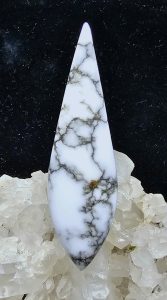 How to Spot Dyed Howlite Sold as Turquoise
How to Spot Dyed Howlite Sold as Turquoise
If you have ever been to a rock and gem show, you might find different beads, carvings, or jewelry sold as genuine turquoise at low prices. If you think they are too good to be true, that might be the case. There are shortcuts everywhere, and here is no exception. Throughout history, turquoise has been such an unmistakable and highly sought-after stone that prices have almost always reflected this. Because of the porosity and similarities in pattern, many learn how to make turquoise using howlite that has been dyed and used as a cheaper substitute to sell at these higher prices. Here are a few tricks to spot the stand-in.
First, notice the difference in hardness. Howlite has a hardness of about 3.5 on the Mohs scale; turquoise can range from 5 to 6. If given the chance to scratch howlite, it will be scratched easily; genuine turquoise is more resistant to scratching. Soaking acetone on cotton and rubbing it against the stone will produce blue on the swab or a whiter patch on the stone if you have an imitation turquoise. However, this test should be done with caution, as it may damage the stone.
My best advice is to ask the seller for information about the stone, such as the name and location. If you feel skeptical, you might be right.
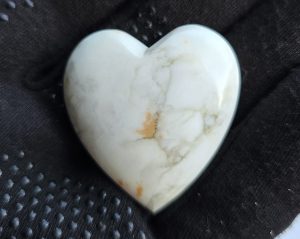 How to Cut and Shape Tick Canyon Howlite
How to Cut and Shape Tick Canyon Howlite
Slabbing this material is simple because there is no wrong direction to slab on the saw. Depending on the size of your rough, either clamp it tightly on a larger blade or choose to manually push through on a smaller saw. Generally, I choose to pick softball-sized chunks to cut on my 10-inch blade because of how quick and easy each cut is. That way, if I’m left unsatisfied by the cut, I can change direction to find the visually best patterns possible. Be sure to use water instead of oil for your blade, as the oil might cause some discoloration from the typical porcelain white color.
Howlite is a great material to practice with when working with softer materials because of its low cost and hardness. Even so, I would suggest starting on a used 80-grit or 220-grit steel wheel and slowly getting a feel for how quickly it grinds away. I typically skip onto the 140-grit soft resin wheel and continue my shaping there. At this stage, I focus on shaping the girdle and dome, taking care not to sand away my desired design. Following this stage is the 280-grit soft resin wheel to remove any scratches remaining. Because of the pearly white, make sure you have a well-lit station to carefully observe the stone. I’ve let scratches pass, assuming I removed them all.
Polishing & Finishing Your Tick Canyon Cab
Now you can continue onto the 600-grit soft resin wheel to prepare your pre-polishing and continue onward to your routine polishing set-up. You can end on either 8000 or 14,000 grit, leaving you with a gorgeous high polish. You can also use Zam polishing compound to give it that extra boost.
This story about Tick Canyon howlite previously appeared in Rock & Gem magazine. Click here to subscribe. Story by Ben Kaniuth.


